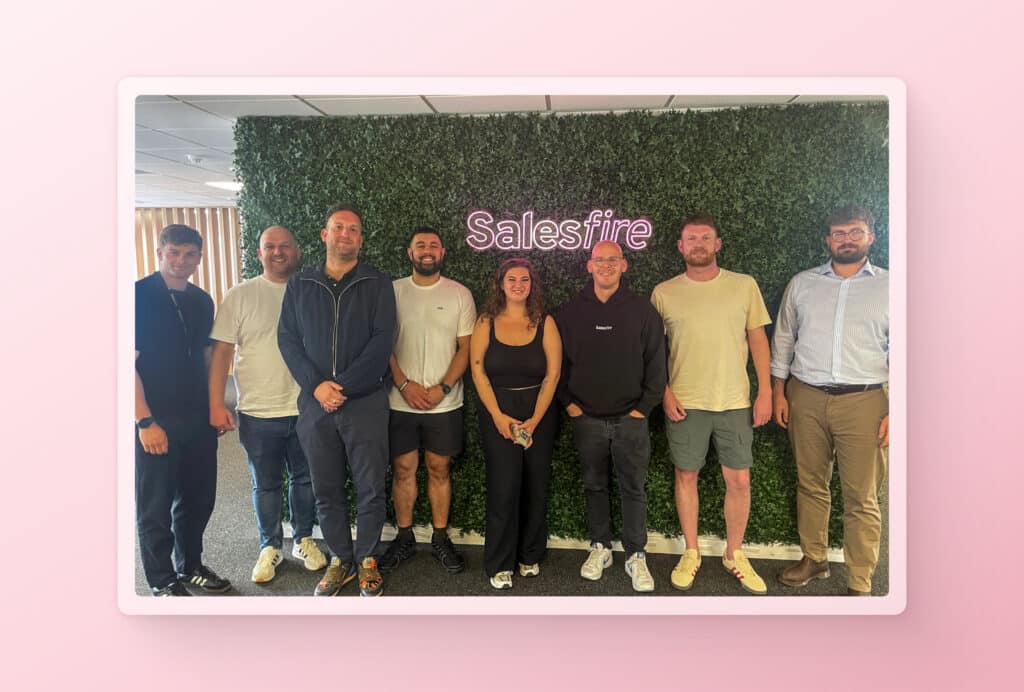10 Ways to Increase eCommerce Conversion Rates
By Laura Taylor • Last updated: Friday Apr 26th, 2024
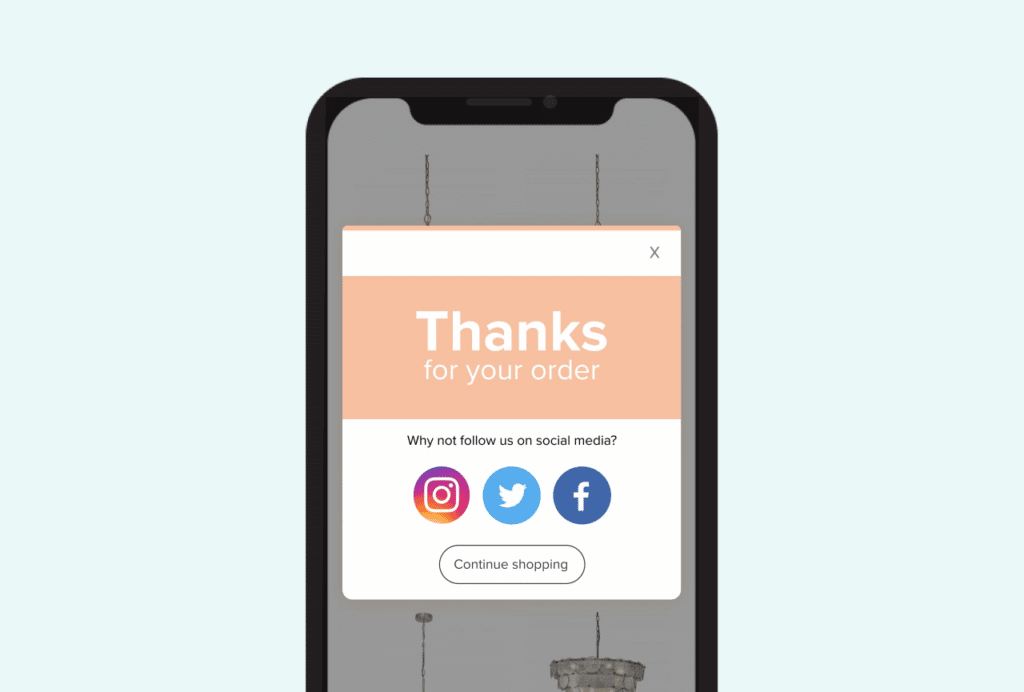
Optimising conversion rates for eCommerce sites is crucial for those looking to achieve sustainable, long-term growth.
Constantly driving new traffic to your site is all well and good, but once potential customers arrive on your homepage, you need to create a seamless, personalised customer journey, otherwise your PPC and paid social efforts may have been for nothing.
Thankfully, you can make a number of simple changes which will help persuade window shoppers to convert into loyal customers.
We have compiled a list of nine highly effective conversion rate optimisation (CRO) strategies that will allow you to squeeze the most out of your website traffic, drive revenue and cultivate loyal, returning customers.
Suggested reading: Are you new to CRO? Check out our back-to-basics guide to conversion rate optimisation.
Related: Are you new to conversion rate optimisation? Check out our back to basics guide on all things CRO.
How to Increase Your eCommerce Conversion Rate
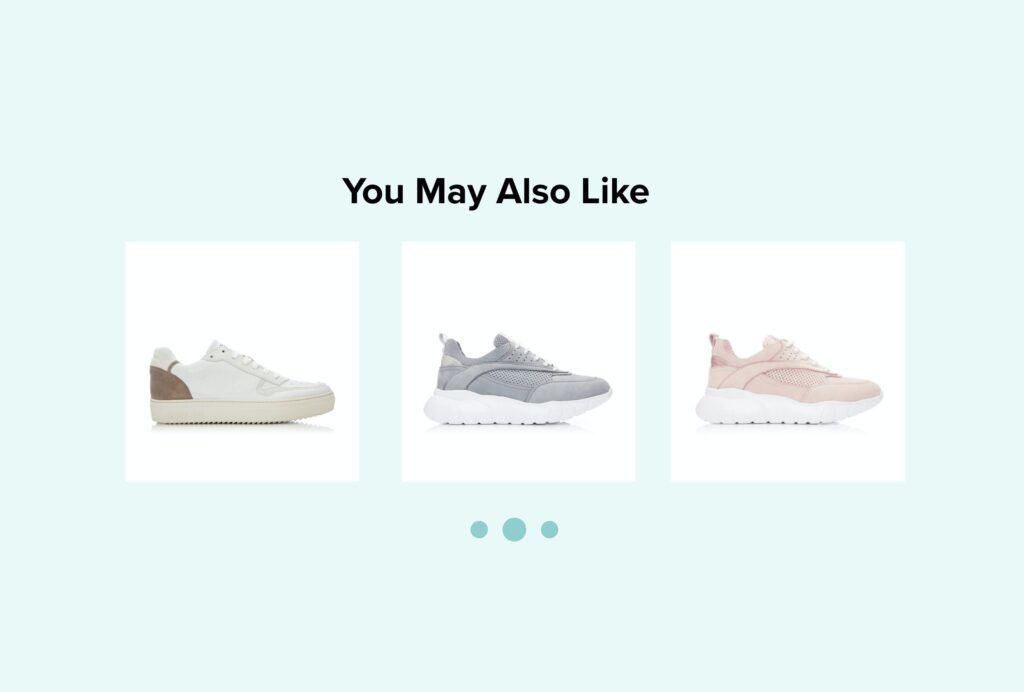
1. Inject dynamic content
Personalisation goes hand in hand with eCommerce. Customers expect their shopping experience to be tailored to their tastes and preferences.
In fact, research has shown that 71% of customers expect personalised interactions, while 90% expect their experience to be seamless across different channels.
You might think it sounds challenging to create unique customer journeys for each visitor, but you can let AI and machine learning do the hard work with personalised product Recommendations.
Product Recommendations use data-driven insights to suggest items to customers based on their on-site behaviour.
What you can do: In addition to integrating product Recommendations on your homepage you can also use them as a last-minute incentive on the checkout page.
These intelligent suggestions will:
- Provide customers with discounts and boost loyalty.
- Encourage higher basket values.
- Increase your AOV.
eCommerce personalisation with Recommendations connects customers to the product or service they want, meaning they are more likely to convert.
It’s important that you’ve also got a grip on the basics elements of eCommerce: that means including high-quality images, clear paths to checkout, and a strong customer service team.
Pro tip: Read our article, ‘6 Ways to Use Product Recommendations’, to get more Recommendations ideas.
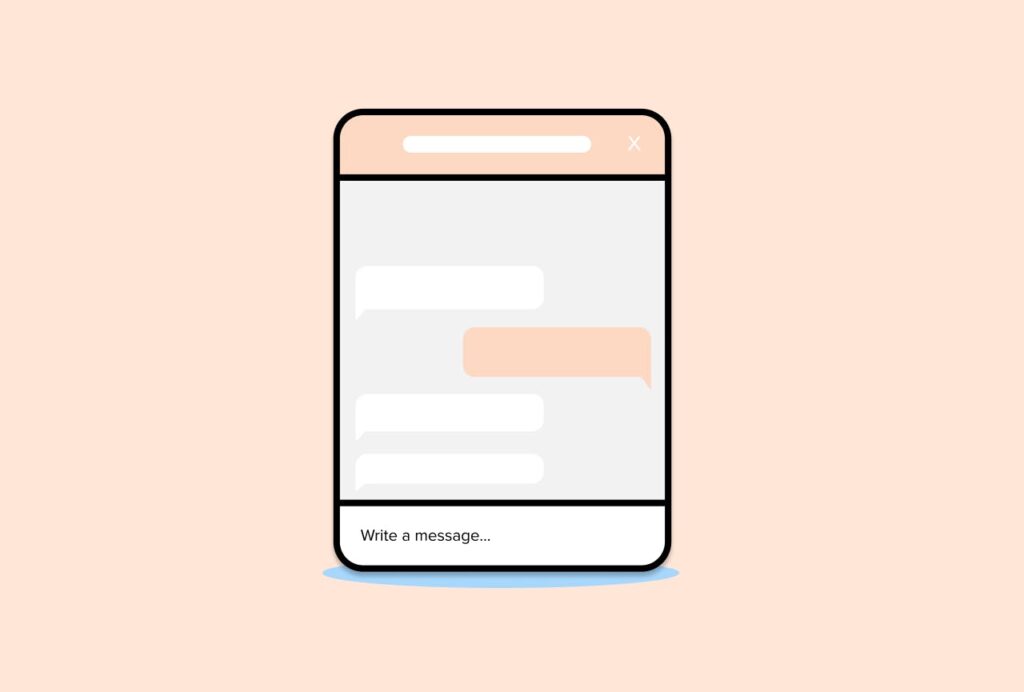
2. Improve customer support
Sometimes there is one question standing between a customer and a purchase. When customers are in-store this can be resolved by talking to a sales assistant, so why should the online shopping experience be any different?
If an easily answered question is preventing a shopper from converting, make it simple for them to get the answers they need with an on-site Digital Assistant.
This will help to resolve any last-minute hesitations a customer may have, giving them the confidence to complete their purchase.
Easily accessed on any page of your website, on-site Digital Assistants can improve eCommerce customer experiences, boost conversion rates and deliver customers through the checkout process.
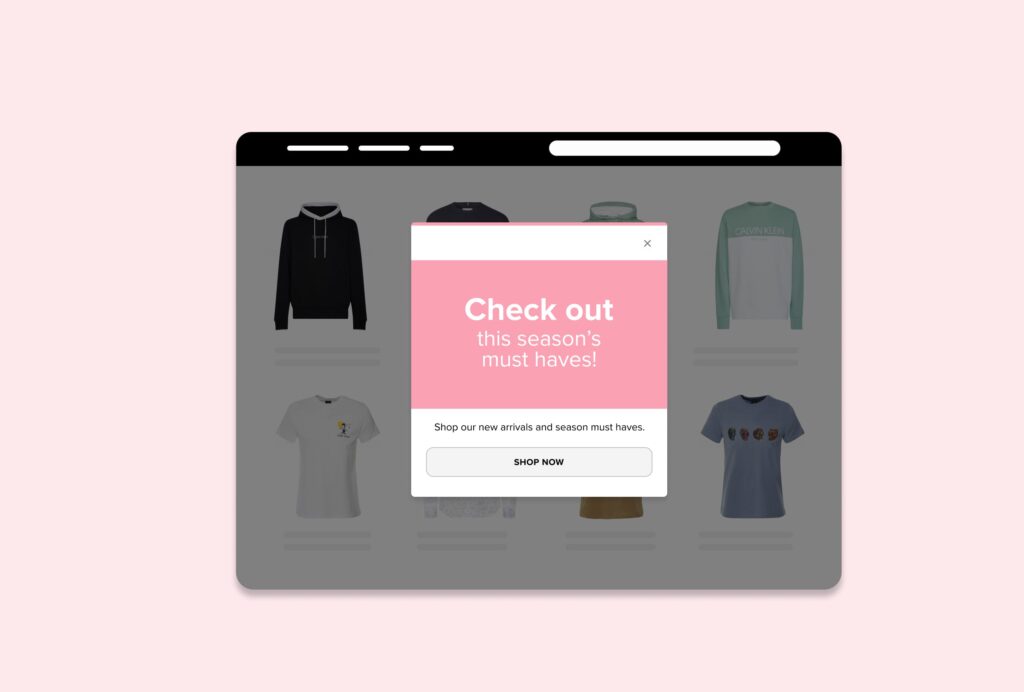
3. Leverage exit intent technology
You’ve done it – your marketing strategies have paid off, and you are driving traffic to your website. But how do you stop potential customers from leaving early?
Exit intent technology tracks user behaviour and detects if a customer is about to leave your site.
You can then instruct behavioural Overlays to:
- Deliver personal messages: Trigger your overlay to display a targeted message to the shopper.
- Increase eCommerce urgency: This Overlay could offer a discount code if the customer has items in their basket, or remind them of your best price guarantee.
- Support the user journey: You can pre-emptively answer common user questions or concerns to support the user journey and guide shoppers to checkout.
By setting certain conditions and parameters, you can tailor the Overlay message for individual shoppers. Salesfire’s Overlay tool has been shown to deliver a 115:1 return on investment.
Pro tip: When you make any changes to your website, including your Overlay design and messaging, using an A/B test proves if the changes have positively impacted your average eCommerce conversion rate.
If you base changes on guesses alone, you’ll never know if you’ve made an improvement, or if you have in fact damaged customer engagement. That’s just one of the many reasons why A/B testing is important — particularly in eCommerce.
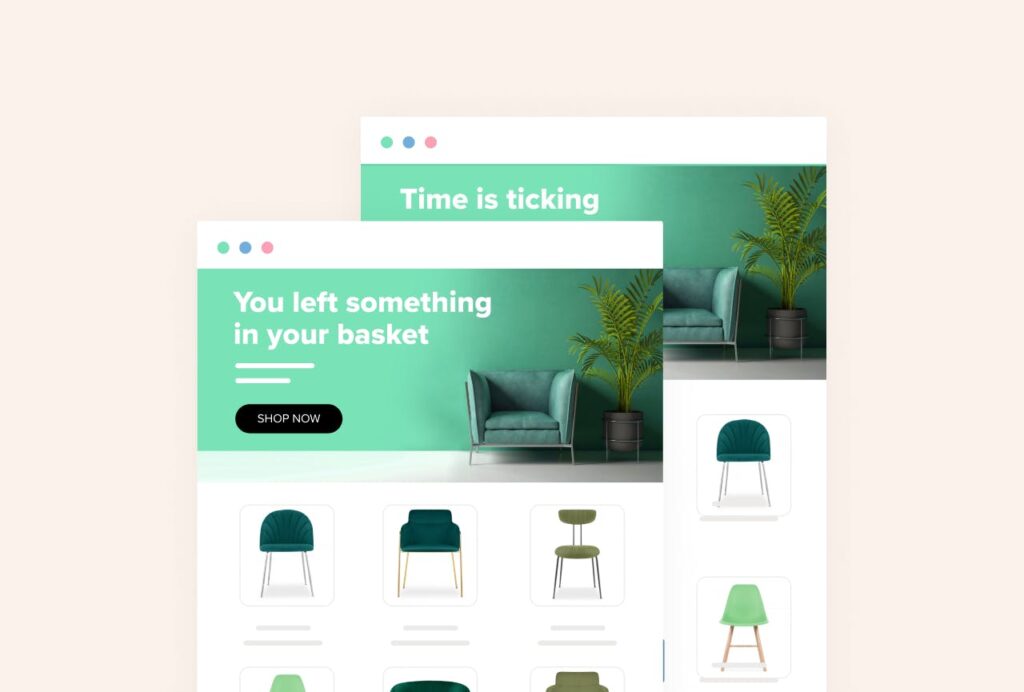
4. Retarget engaged customers to prevent basket abandonment
Shoppers abandon their baskets for many reasons, but you can make sure a lack of communication isn’t one of them.
Engaged customers who have provided their email address are already interested in your items but may have been pulled away from your site for a number of reasons.
Make sure you maximise their interest by re-engaging them with email retargeting.
Sending their basket straight to their inbox or delivering personalised suggestions with email retargeting encourages cart abandoners to revisit your site and complete their purchase.
Don’t miss the opportunity to convert an already engaged shopper. The hard work to win their interest has already been done, and using intelligent conversion rate optimisation tools can convert them into a customer.
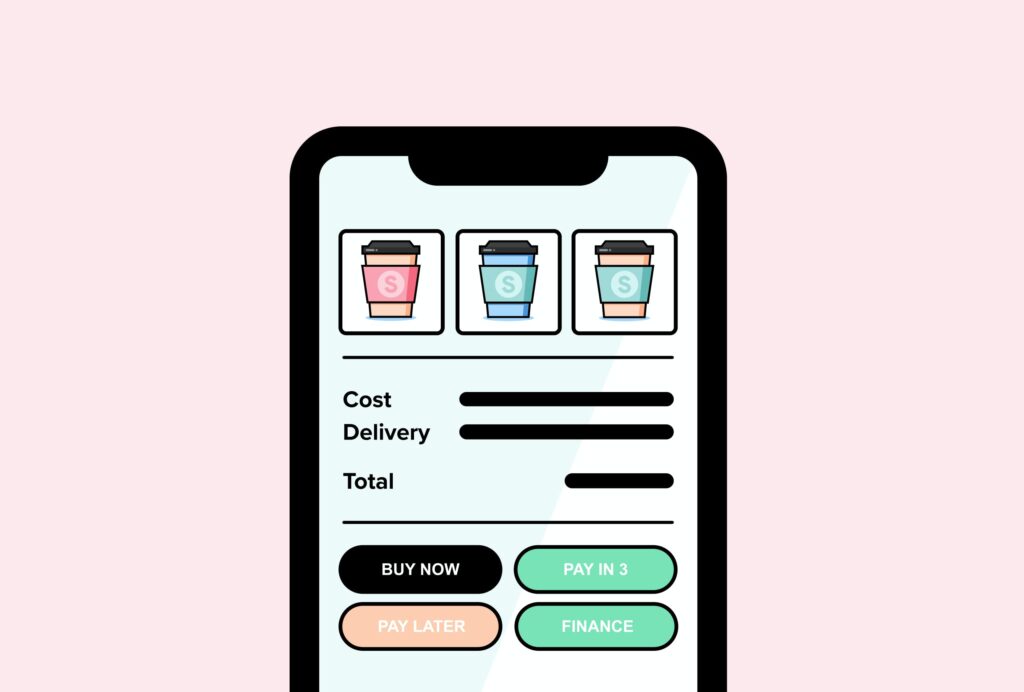
5. Introduce multiple payment options
Your level of service plays a crucial role in creating improved conversions. If your payment process does not offer the services shoppers have come to expect, they may look to an alternative retailer.
Baymard research has shown that concerns about payment options are some of the top reasons for reduced conversions. In their 2022 study, they found that shopping cart abandonment was largely influenced by:
- High additional costs (48%).
- Not trusting the site with credit card information (18%).
- Long or complicated checkout processes (17%).
Shoppers now expect multiple payment services to be available when they shop online, especially for big-ticket items. Offering several payment options means you cover a wide variety of customer needs.
With Klarna’s ‘buy now, pay later’ schemes, shoppers can pay in 30 days, pay in three instalments or pay on finance.
Removing the pressure for shoppers to immediately commit to their purchases, Klarna’s seamless payment solutions increase average conversion rates by allowing customers to get the items they want, when they want them and pay later.
By implementing intelligent time-based Overlays, you can include a strong call to action to remind customers of your Klarna checkout process as part of a seamless shopping experience, encouraging them to complete their purchases.

6. Create urgency
Scarcity marketing is a tried and tested strategy to increase conversion rates.
When a customer knows stock is running low, or your offer for free shipping ends shortly, they can be persuaded to convert.
We have all felt the urgency of a counter in the corner of the page letting us know there are only a handful of items available and, most of the time, knowing the item is scarce makes us act.
This fear of loss technique can be integrated into all manner of eCommerce stores to instil urgency and encourage customers to move quickly. Keeping them in the sales funnel will:
- Drive more eCommerce sales.
- Reduce cart abandonment.
- Reduce acquisition costs.
With Digital Assistant, you can communicate stock levels on product pages to promote scarcity on items you have a limited number of. This will capture the attention of customers and persuade them to convert.
Pro tip: Are you a fashion eCommerce retailer? Learn more about how to reduce basket abandonment on your site by reading our free eBook, ‘Reducing Cart Abandonment in Fashion eCommerce: A Step-by-Step Guide’.
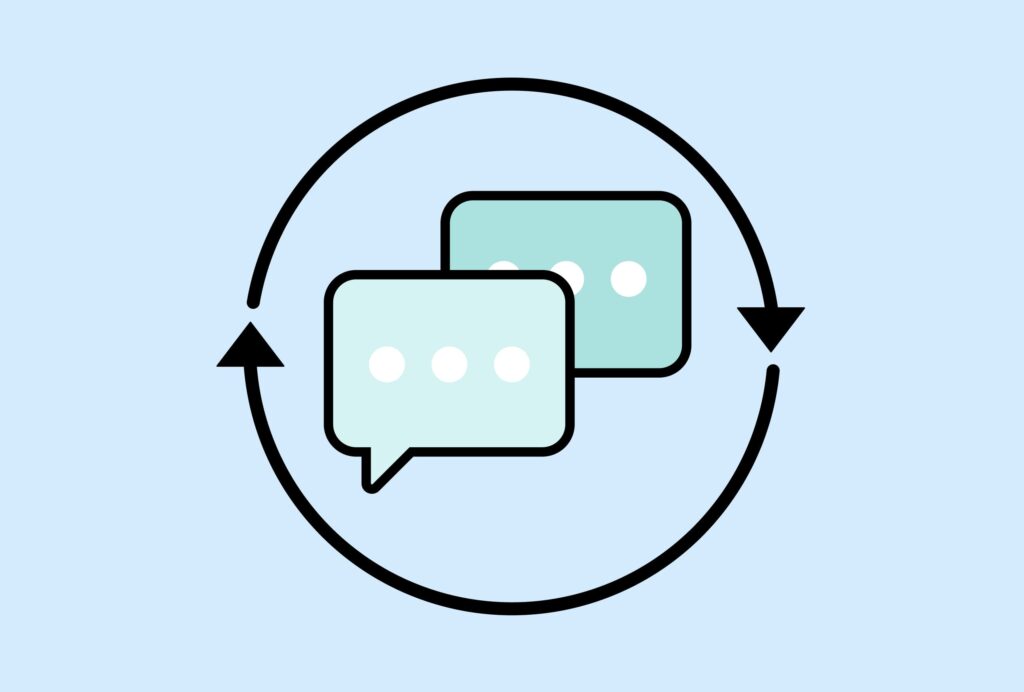
7. Be transparent and consistent in your communications
Every element of your site provides an opportunity to communicate with your customers.
Make sure you’re sending the right message by consistently and clearly communicating with them.
There is nothing worse for shoppers than arriving at the checkout page to discover unexpected costs and charges added to their order. But if a customer is aware of the total cost of an item from the outset, they are much more likely to accept the charges and go through with the purchase.
Make sure you are:
- Being transparent with customers about how much their item will cost is key to developing customer experiences and loyalty.
- Taking care with your website copy. From a blog post to product descriptions and FAQs, ensuring you communicate clearly and use a consistent tone of voice means a customer will feel more confident in purchasing from your site.
- Providing clear CTA buttons that ensure customers know what the next desired action is.
With clear, to-the-point copy and communications, eCommerce sites can build trust with shoppers and boost conversions.
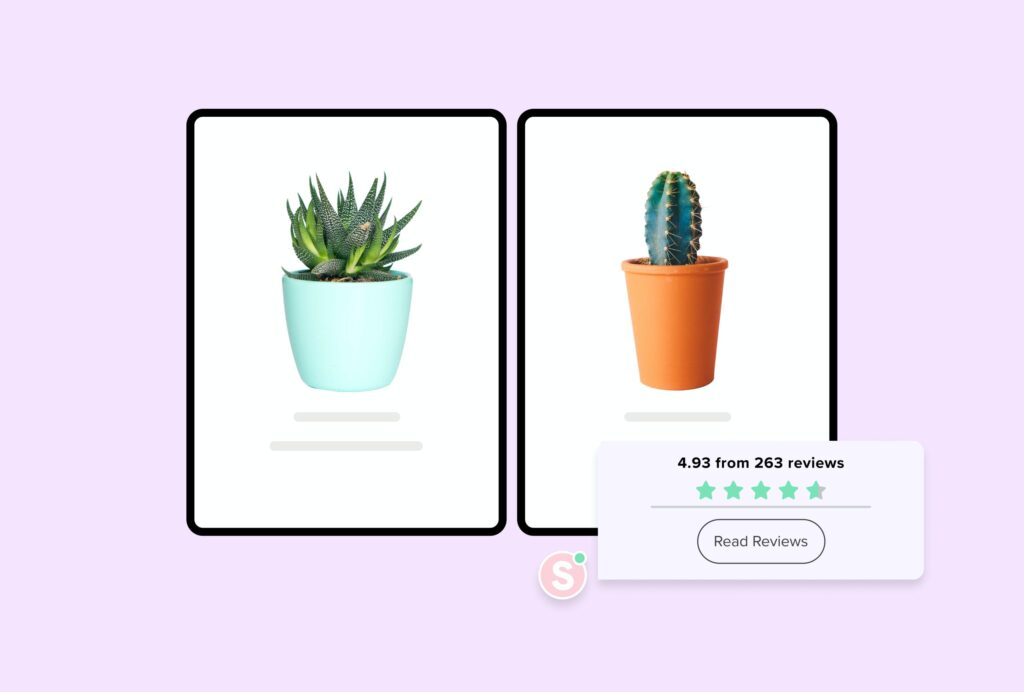
8. Integrate social proofing
People tend to follow the crowd; it’s human nature, and online shopping is no exception.
Customers are influenced to buy items that are popular and ‘approved’ by other consumers. For an eCommerce business, this is something you can use to get higher conversion rates.
The idea of social proof is that people will copy what the majority are doing. So if you can show that a product is popular, customers are more likely to purchase it.
Pro tip: Deliver Recommendations on product pages, adding reviews to your site acts as a form of social proof to increase the desirability of a product.
With Salesfire, you can run ‘Most Popular’, ‘Personalised’ and ‘Bought Together’ strategies to demonstrate to shoppers that your items are in high demand. Support this with an AI-powered Visually Similar Search tool to provide the ultimate level of personalisation and website functionality.
By showcasing reviews from other customers and making it easy for shoppers to find their desired items, you will be able to streamline the user journey and improve your conversion rates.
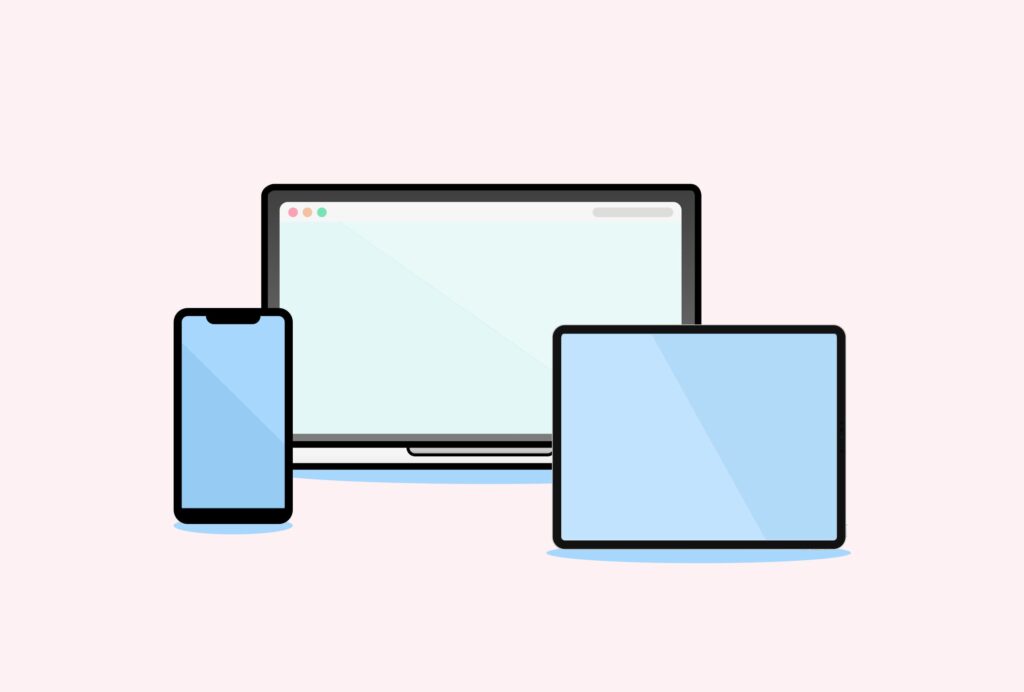
9. Optimise your site for all devices
Customers are no longer only shopping on desktops and laptops. The growth of mCommerce has benefits, but eCommerce sites need to ensure they are being responsive to industry changes.
Nothing infuriates a shopper more than a site that takes a long time to load or is distorted on their screen.
Slow load times and non-responsive site designs cost retailers money, customers and conversions.
In fact, 82% of customers report that slow site speeds impact their purchasing decisions; by optimising your site, you could get 5x as many customers than you do.
- Use Visually Similar Search: Visual search allows users to easily find items they may have found on social media or online, and so connect faster with their ideal purchase.
- Keep it simple: Customers visiting your site want to see what you have to offer. Keep the visuals simple and the load times short, making sure any additional Overlays integrate seamlessly into the user journey.
Embrace AI-powered Search: an AI-powered Search tool offers visitors more personalised results that are tailored to their needs.
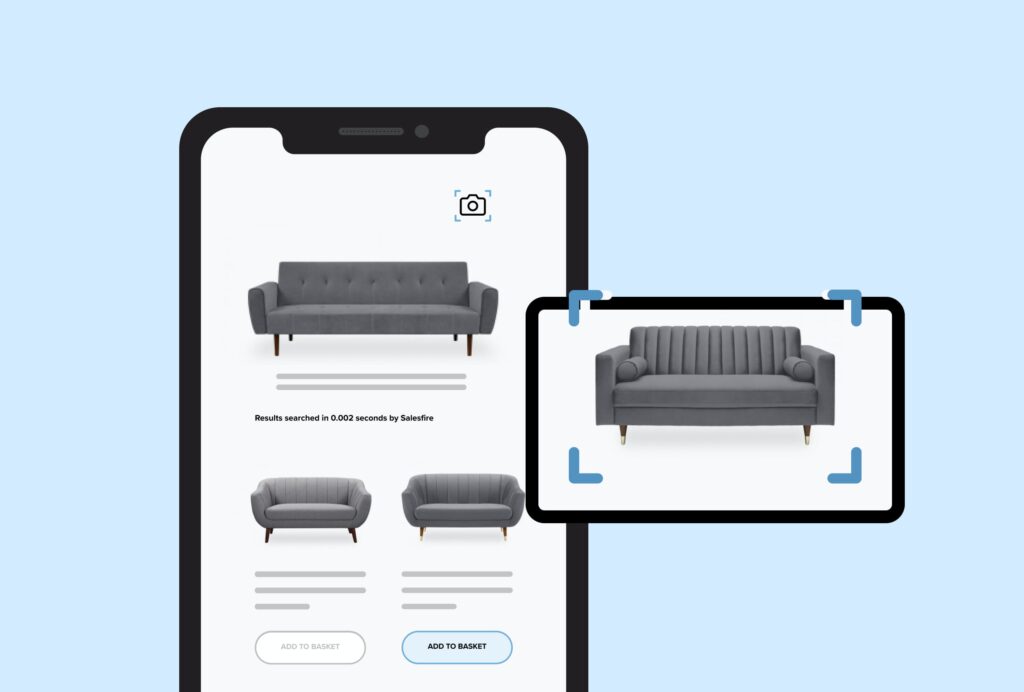
10. Keep up with the trends
eCommerce is a fast-paced industry, and it’s important to keep up with critical eCommerce trends to ensure you are staying relevant to your customers.
You can use Google Analytics to make informed decisions about your most popular product or landing pages.
With the help of Salesfire’s free Trends tool, you can then assess this information against eCommerce industry benchmarks.
If you are not meeting these benchmarks, it could be a sign that you are lagging behind and are not providing the experiences shoppers are looking for.
Pro tip: Meet your customers where they are. Is your ideal customer a GenZ-er? Try browsing TikTok and Instagram to learn more about their likes and dislikes.
FAQs
Why are conversion rates important in eCommerce?
Conversion rates are important because they are a sign of the overall health of your eCommerce businesses. If your conversion rates are low, this could be an indication that there are issues with the user journey and your website is inhibiting purchases.
Letting a low conversion rate go unchecked will inevitably lead to higher acquisition costs, lower AOVs, and reduced sales.
Learn more in our article, ‘Why is CRO Important for eCommerce?’.
How can I increase my eCommerce conversion rate?
Here’s a summary of our top tips:
- Inject dynamic content
- Improve customer support
- Leverage exit intent technology
- Retarget engaged customers to prevent basket abandonment
- Introduce multiple payment options
- Create urgency
- Be transparent and consistent in your communications
- Integrate social proof
- Optimise your site for all devices
- Keep up with the trends
What are the average conversion rates in eCommerce?
As of May 2023, the average eCommerce conversion rate is 3.45%, an increase of 3.46% on the previous month and an increase of 1.42% compared to May 2022.
Get more live eCommerce data from Trends.
Improve your conversion rates today with Salesfire
Salesfire has a suite of CRO tools designed to streamline user experiences, boost sales and drive eCommerce success.
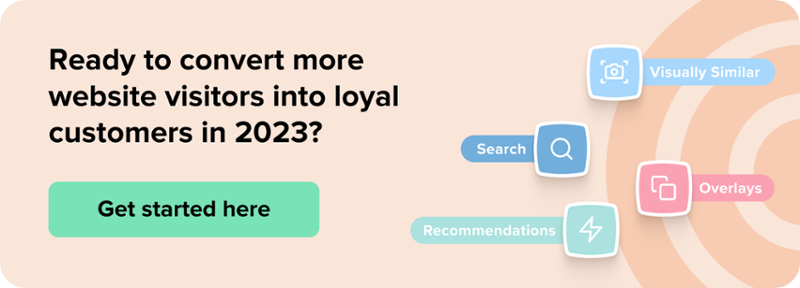
See how Salesfire can help you optimise your product discovery experience. Email one of our experts at [email protected] or book a free demo of our personalisation tools.


